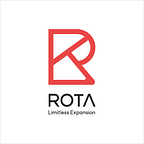Privacy on the Blockchain: Introducing ROTA Blinder
Welcome to the second post in the ROTA Chain introductory series!
Here is a quick recap of the salient points from our last post:
- Combining EVM + WASM on one chain = traditional Web2 developers can build Web3 stuff without changing their comfy current workflow.
- We tested various modules for EVM and WASM to find the right combination and the additional barriers we needed to resolve.
- Bytecodes, libraries, and coding conventions were some of the main barriers.
- We’re still working on how to resolve the block structure differences to create a token bridge.
One exciting new feature ROTA provides is the privacy-enabling ROTA Blinder. Using the Blinder, ROTA Chain users can now selectively hide sensitive transaction details such as the to, from, and amount values in any of their transactions conducted on the ROTA blockchain! This can be done on a case-by-case basis, so you can keep transactions fully transparent when needed, and you can make them partially or fully private when you need.
Today we’ll take a deep dive into how we’ve leveraged ZK-Snark technology and the concept of zero-knowledge proofs to implement this highly demanding game-changing privacy feature.
Please note that the ROTA Blinder is currently in the POC (Proof of Concept) stage. It currently supports live functional demonstration transactions, and we look forward to bringing it to full-scale public release on our upcoming mainnet soon.
The ROTA Blinder provides an interface for private transactions on the ROTA blockchain. Transactions processed using the ROTA Blinder are made private by hiding the “From,” “To,” and “Amount” fields associated with the private transaction from the ROTA Explorer. Instead, the transaction details contain the transaction proof and public signal generated using our ZK-Snark implementation. ROTA Explorer tags these private transactions with “Blinder txn” so it’s clear which transactions were made private with ROTA Blinder and it is easy to verify the transaction. Still, it is impossible to recover any of the transaction details.
Below is a screenshot of ROTA Blinder’s interface:
Zero-knowledge proofs are cryptographic protocols that allow verifying a statement without revealing any other information about the statement. ZK-Snarks, or Zero-Knowledge Succinct Non-Interactive Arguments of Knowledge, are a form of zero-knowledge proof that is particularly suitable for blockchain applications. With this technology, users can prove specific facts about their transactions to other blockchain participants without revealing the details of those transactions.
It’s easy to see how the potential use cases of zero-knowledge technology on ROTA Blinder are endless, but here are a few to get your imagination primed:
- Private digital payments — ZK-Snark technology can facilitate private digital payments on the blockchain by allowing users to verify their payment transactions without revealing any additional information about those transactions. ROTA Blinder currently demonstrates this use case.
- Private data storage — Organizations can use ZK-Snark technology to store sensitive data on the blockchain while ensuring that only authorized parties have access.
- Anonymized voting — Governments and organizations can use ZK-Snark technology to enable anonymous voting on important decisions in a secure and verifiable way.
At ROTA, we look forward to seeing how users and developers will creatively implement our zero-knowledge support soon!
Thank you for taking the time to learn about ROTA Chain’s game-changing zero-knowledge implementation, ROTA Blinder! To get more involved, we strongly recommend joining the chatter in our community channels:
Telegram Announcement Channel: https://t.me/rota_ann_official
Telegram Discussion Group: https://t.me/rota_official
Discord: https://discord.gg/rotachain
Twitter: https://twitter.com/rotachain
